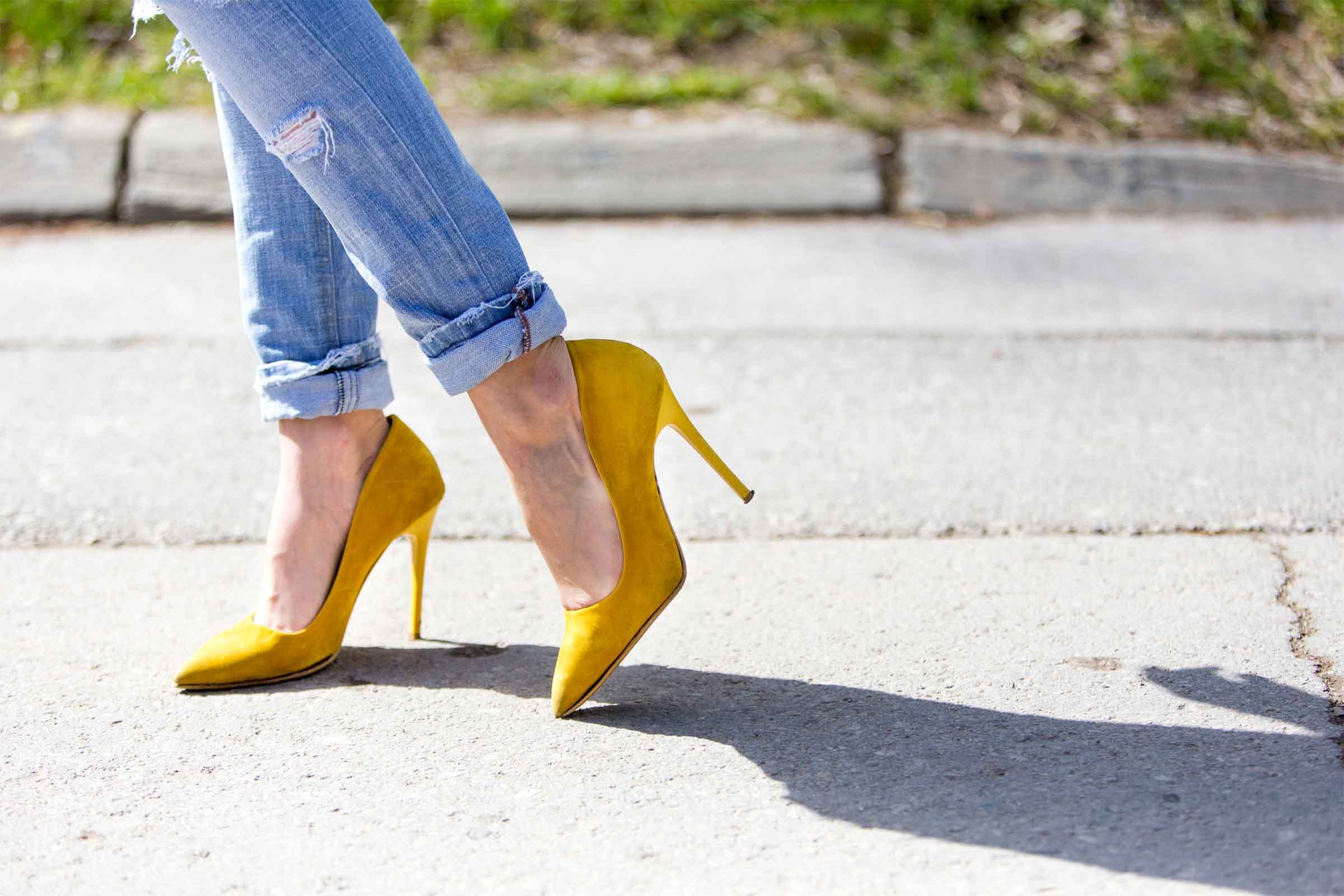
Heels put more pressure on the ball of your foot
Your upright foot is used to balancing on both its front and its back, so when you tilt it into your favorite black stilettos, it’s no wonder your forefoot starts to feel so much more pressure. According to Jane Pontious, DPM, chair of the department of podiatric surgery at Temple University, this pain in the joints in the ball of the foot, known as metatarsalgia, can even lead to stress fractures over time. The good news is that you can easily decrease the pain by decreasing your heel’s height. Research from the Spinal Health Institute shows that while three-inch heels put 76 percent of your foot’s pressure on your forefoot, two-inch heels decrease the pressure to about 57 percent, and one-inch heels lower it to 22 percent. That’s cutting the pain by more than half with a decrease of just two inches.
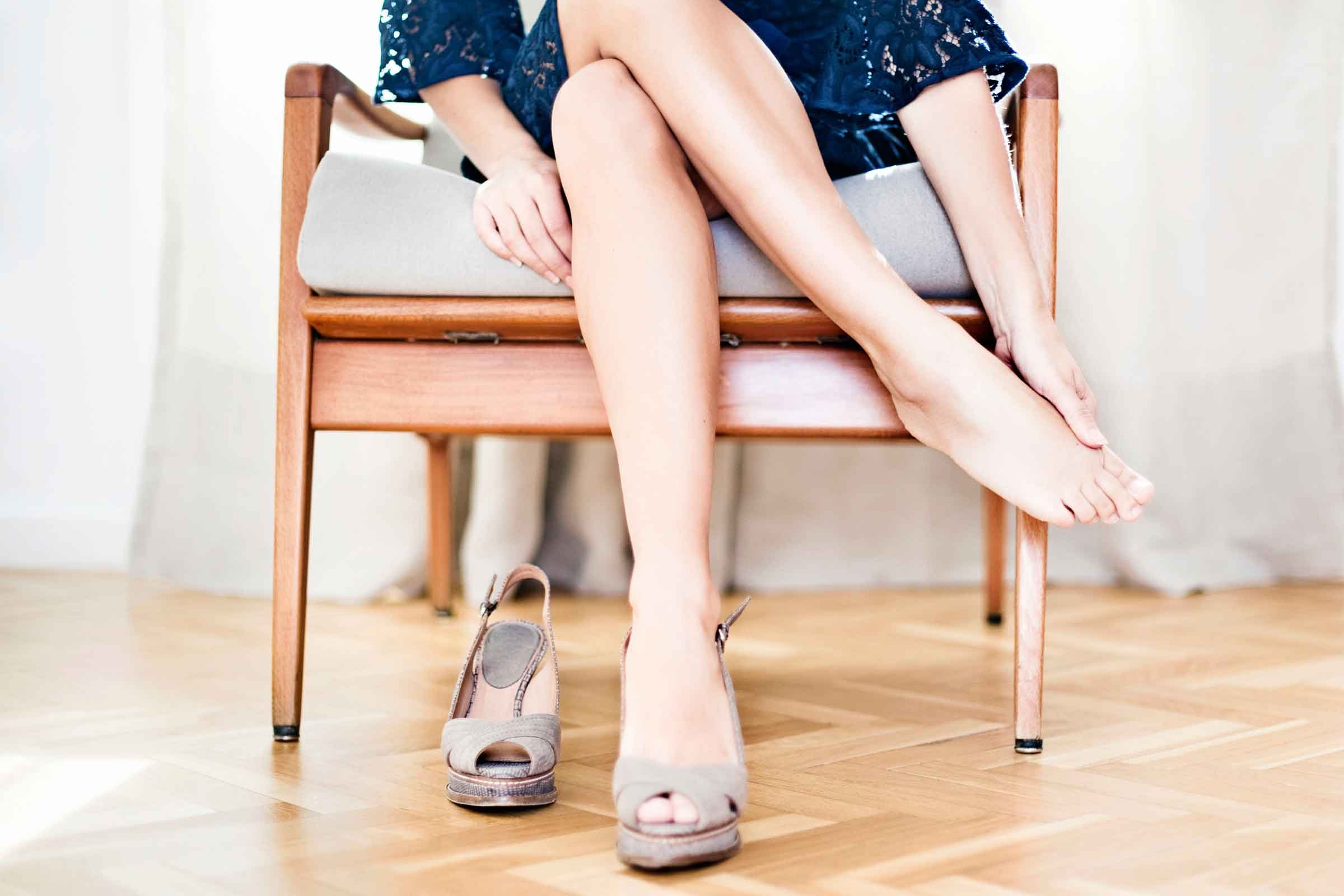
High heels can cause plantar fasciitis in the heel and arch of your foot
Your Achilles tendon, or the band of tissue stretching from the back of your heel all the way to your calf, lengthens and shortens with your foot movement. When you point your toes and your heel rises closer to your calf (like you do when wearing heels), your Achilles tendon shortens. But too much shortening is a bad thing, according to Dr. Pontious. Because the Achilles connects to the plantar fascia, or the ligament that stretches along the bottom of your foot, shortening your Achilles tendon pulls on the plantar fascia, causing it stress. The result is a form of pain in your heel and arch known as plantar fasciitis. (Swap the heels for a pair of these best shoes for heel pain.)
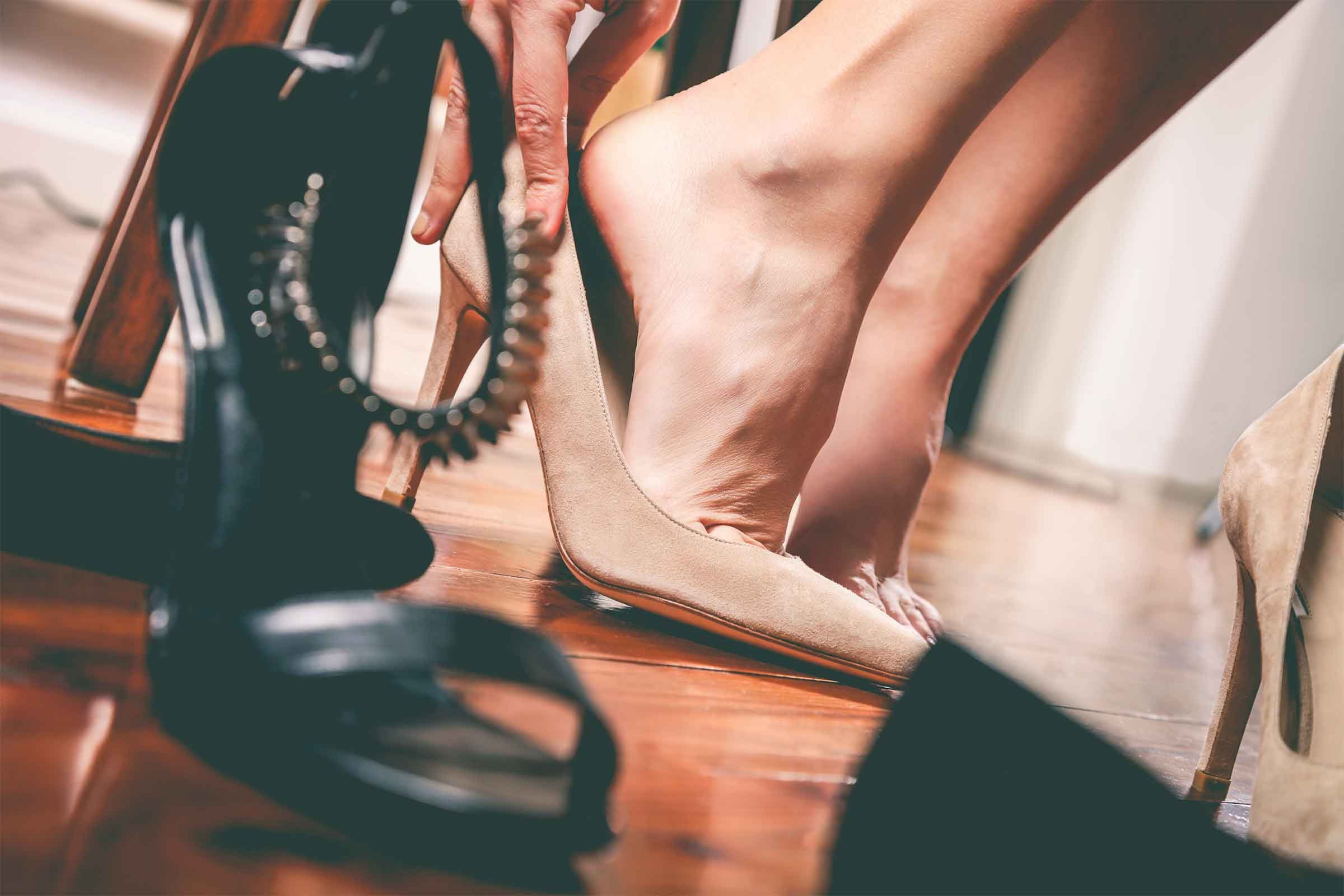
Their pointy ends push your toes together
Dr. Pontious has noticed that many popular high heels are not only tall, but narrow, too. “The reason for that is because it makes our feet look smaller, and smaller feet are viewed in general as being more attractive,” she says. But when fashion starts to compromise foot function, there’s a problem. Women who regularly wear heels with narrow, pointy toes develop muscle imbalances, hammertoes, or bunions as a result of the pressure the shoes putsite:r on their toes when they shove them together. Sometimes pointy toed-shoes can even irritate or inflame the nerves enough to cause nerve conditions in the feet that cause pinching and pain sensations. To avoid these, make sure to buy a shoe that doesn’t narrow too much at the toe, especially if it’s a heel. Here are foot doctors’ tips for pain-free sandals.
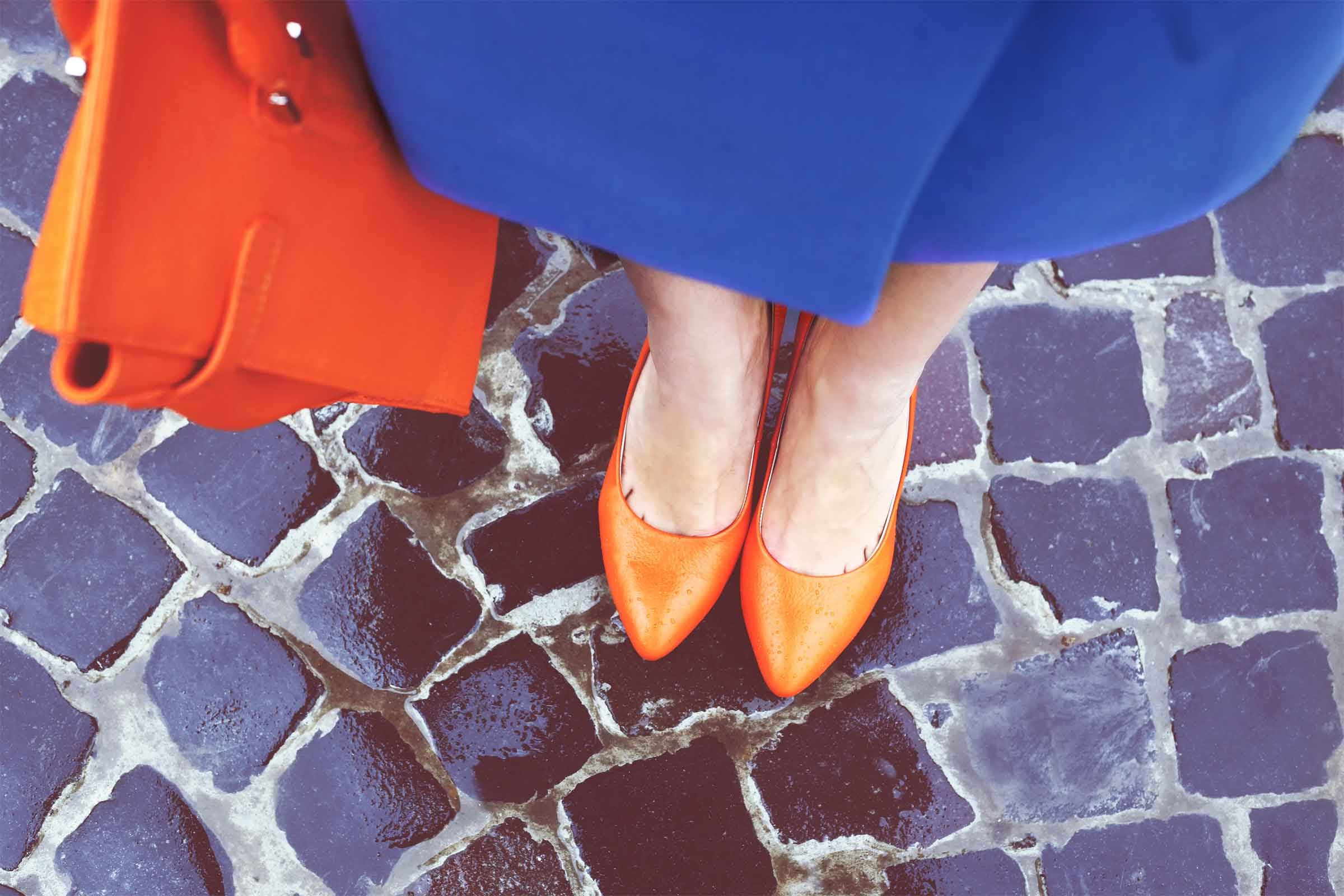
They can be too small for your feet
Just as narrower feet are perceived as more attractive, so, too, are shorter feet, and some women are willing to sacrifice the comfort of their feet to make them appear smaller. According to WebMD, nine out of 10 women wear shoes that are too small, causing bunions, corns, and blisters, and irritating foot joints enough to potentially cause arthritis. If you’re going to wear a heel, make sure it’s a comfortable size for your foot; you’ll thank yourself later. Should you get a blister anyway, try one of these home treatments to heal blisters quickly.
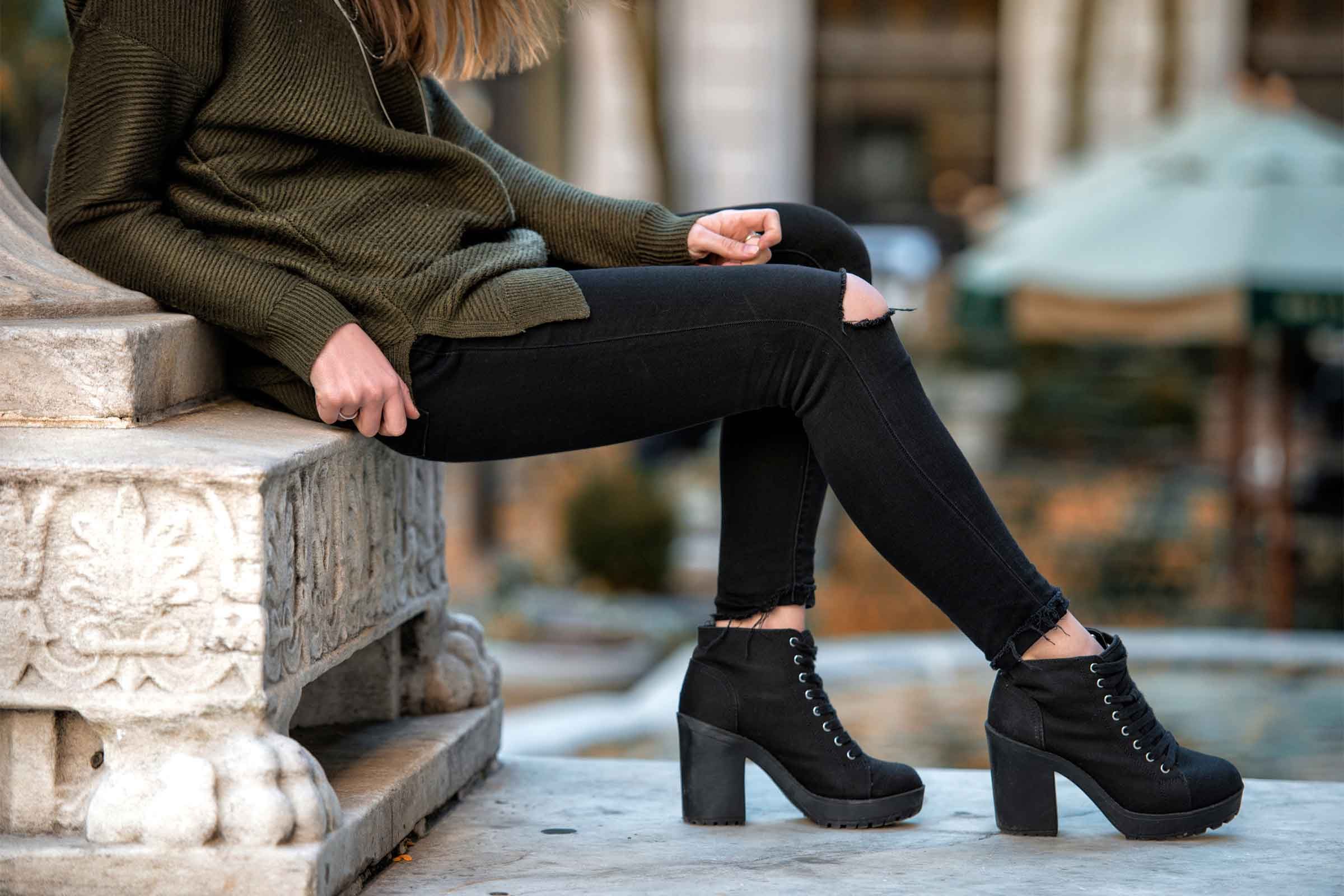
High heels put extra stress on your knees
When you shift the pressure on your foot forward by strapping on high heels, the center of gravity of your body immediately moves forward, too. Unfortunately your knees feel the brunt of this change as they struggle to keep your body up and balanced in this shifted position. In fact, a 2014 study published in the Journal of Orthopaedic Research showed that increasing your heel height or your weight hurts your knees even more, and possibly increases the risk of arthritis in the knees. Here are proven knee pain treatments and when to try them.
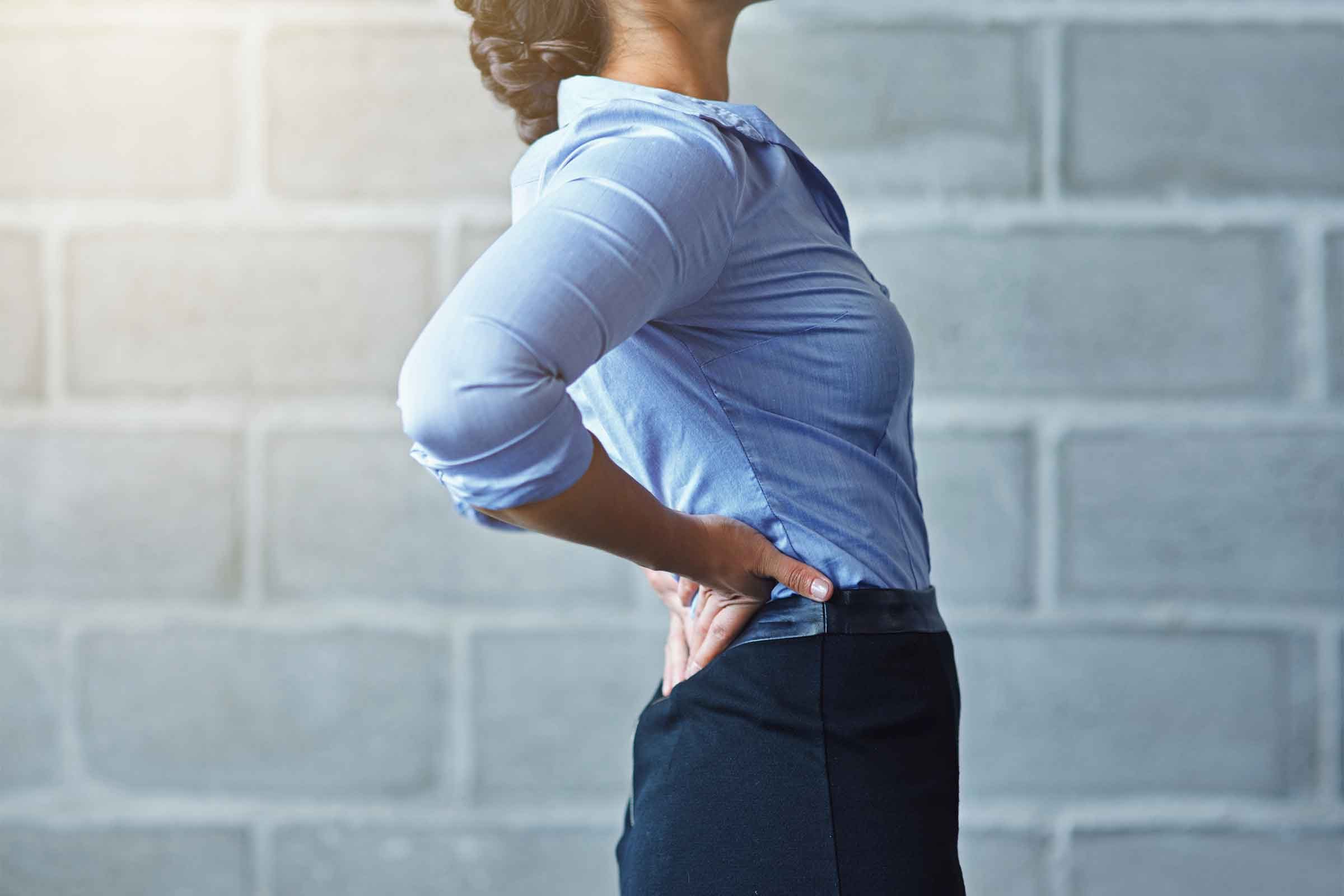
Heels change your posture for the worse
Because your legs are pushed forward in high heels, your upper body is forced backward to counterbalance your lower body. Your lower back arches, your chest is pushed forward, and the normal “s-curve” of the spine, which typically acts as a shock absorber for the vertebrae, is shifted, according to the Spinal Health Institute. As a result, muscle overuse can lead to back pain, not to mention other issues like spondylolisthesis, or the crowding of vertebra over each other in the lower back, where weight is suddenly more concentrated in heels. These easy tricks can correct your posture fast.
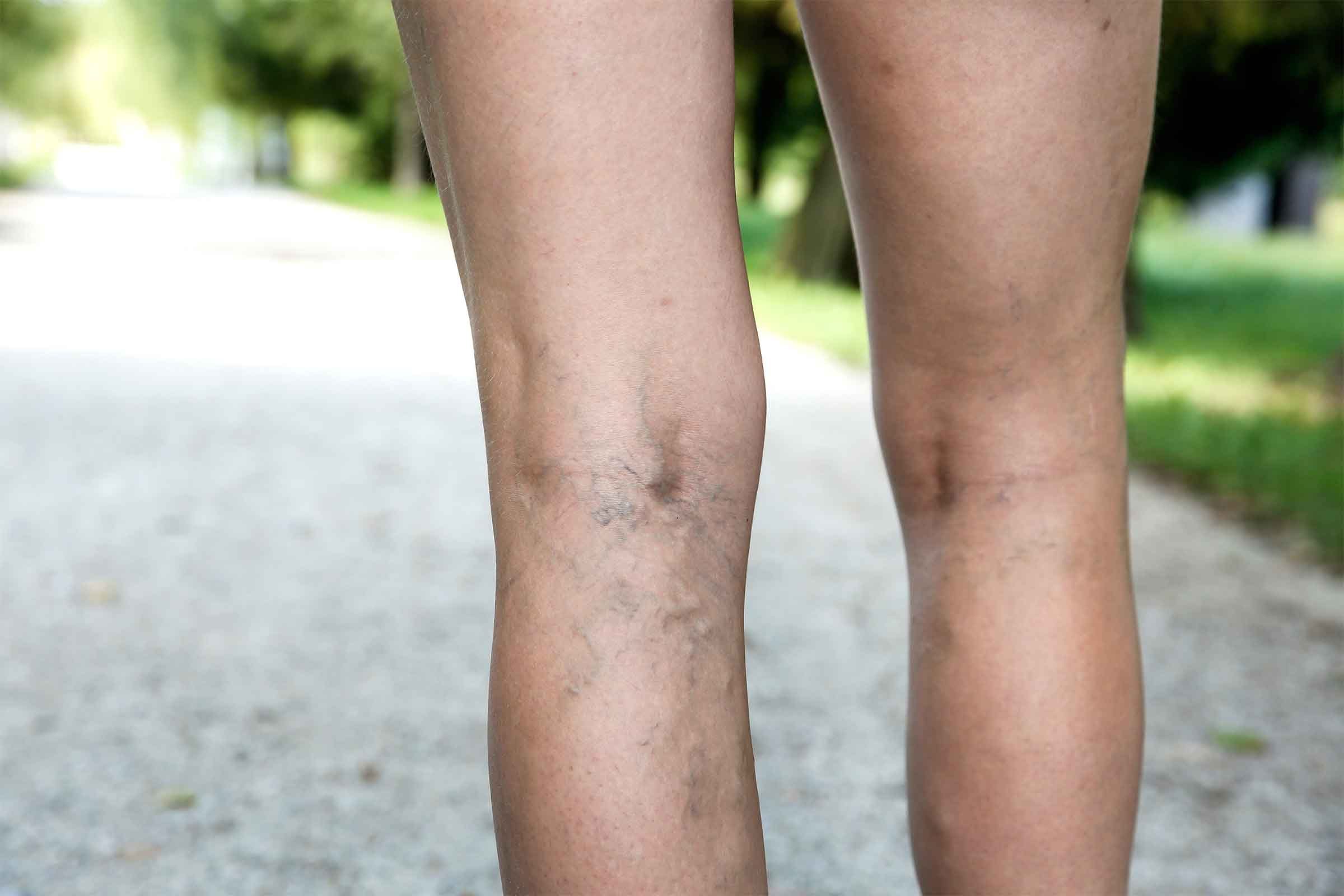
Heels can give you varicose veins
When your legs move forward in heels to float over your toes, your calf muscles contract and stay contracted, instead of contracting and releasing as they usually do in lower-heeled shoes. As a result, your blood can’t use that regular calf muscle contraction as a pump to move up and out of your legs, and blood flow throughout your lower limbs slows down, according to Mayo Clinic. When blood can’t escape your legs, it pools in veins that swell and rise into what are widely known as varicose veins. Horse chestnut may help treat varicose veins.
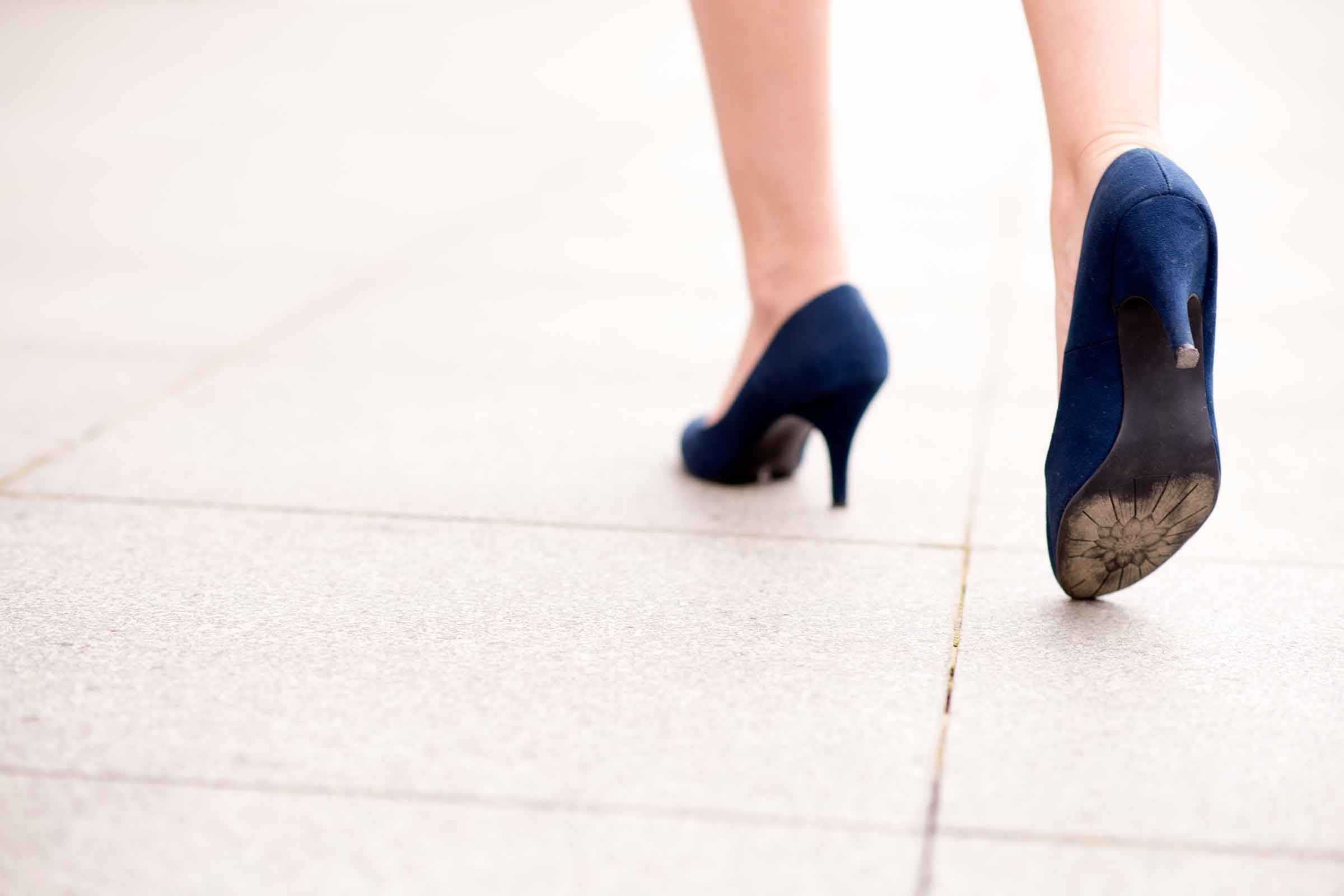
Heels decrease your ankle strength over time
Maybe you’ve only just started wearing heels regularly and have yet to experience much pain at all. Unfortunately, that’s quite normal for women who a few years later experience ankle injuries from high heels. A 2015 study in the International Journal of Clinical Practice showed that women who wore high-heeled shoes often actually strengthened their ankle muscles over the first one to three years through wearing the shoes, only to experience a weakening of the same muscles when they continued to wear them after that time period (for four years or more). Weak ankles detract from your dynamic balance, lessening your ability to avoid falling, spraining your ankle or otherwise hurting yourself. To protect your ankles and yourself while wearing heels, try practicing ankle-strengthening exercises on a regular basis, like “heel walking” (practicing balancing on your heels to walk) and “heel raises” (standing on your toes and raising and lowering your heels).